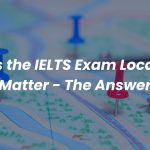If you are here, you are looking for the proven IELTS Speaking Structure to help you score a minimum Band 7 in the exam.
Your wait ends here. Our Proven IELTS Speaking Structure will help you score your desired band on the first attempt.
We have your back if you are hesitant or think the speaking module is not for you. Over the years, our simple, workable techniques have helped countless students make it their favourite.
Remember one thing.
Examiners don’t evaluate each question separately. They evaluate your entire speaking before giving you the bands.
Speaking is a three-part module, and every part is designed differently to test your speaking abilities using four-band descriptors.
The IELTS Speaking Structure with 100% Proven Record
Part 1 – Introduction –
Speaking 2-3 sentences at least. Always listen to the question tense and then speak in that tense. Teachers generally use different tenses to see your grammar range. Be very focused. Always answer in the same tense initially and use connectors to switch the tense to stretch your content. Don’t be repetitive. The top 50 IELTS Speaking Part 1 Sample Answers developed on Band 9 parameters are here.
REMEMBER, your Part 1 answers should be 2-4 sentences long.
In order to extend your Part 1 answers, you can do the following:
- Give Explanations
This is the most obvious way to attach transformation, and we can do it simply by adding a word like ‘because’
- Suggest Contrast
Another obvious method is contrasting by using a word like ‘but or although’.
- Combine Details
Very simply, we combine two things by adding the word ‘and’
- Present Perfect Continuous
You can simply link your past habits to the present by using this tense, by using words like ‘since’, ‘for’
- Past Comparisons
We use the phrase ‘used to’ to compare the past and the present.
- Give Future
Use ‘will’ or ‘be + going to’ to talk about the future.
- Give Examples
An easy way to develop your answers is to add an example by using the words, ‘like’, ‘just’.
- Frequency
You can use words like ‘usually’, ‘never’, ‘always’ and ‘more often than not’ to extend your answers.
Part 2 – Cue-Cards
Cue-cards are generally of 5-types: People, Place, Things, Events, and Activities. If you understand how to identify them, half of the battle is won for you. Many students struggle to expand their answer for 2 minutes without losing track. They struggle very hard, and when it comes to the cue card, they sweat and often lose their cool.
You must speak for up to 2 minutes in this part, which most students find difficult. But with the help of the structure given below, you can easily accomplish this feat.
- Directly answer the task card. Avoid any general sentence. It can divert your answer from the question and can harm your scores.
- Talk about how you feel about the topic and/or why you have chosen this particular topic instead of others.
- Describe the topic/idea that you have given. Use some related adjectives to enhance your vocabulary.
- Talk about the past. You are likely given a cue about some past event and make a story related to the topic even if it is not given.
- Talk about the present or what do you think about the topic in hindsight.
- You can talk something about the future.
REMEMBER, you may not need all six points while talking, and the teacher may stop you in between, let’s say, point number 4. Don’t worry, because your main aim is to talk about the topic for 2 minutes without going off on a tangent.
You can use the cues in the task card to help you, but speaking about them alone is not mandatory.
Part 3 – Two-way discussion/Follow-up Question & Answers
For this, you’ll usually get any of these 7 types of questions.
- Opinion– What do you think about ‘this’? Remember to say why you think that way and give examples.
- Evaluate– What do you think about someone else’s opinion?
- Future– What do you think will happen in the future?
- Cause and Effect/ Problem and Solution etc – What caused ‘this’ and/or what effects has ‘it’ had?
- Hypothetical– Talk about imaginary or unreal situations.
- Compare and Contrast– Talk about the differences and/or similarities between two things.
- Past– How were things different in the past and how have they changed?
To extend PART 3 answers, you can use the following points:
- Directly answer the asked question.
- Explain your answer by giving relevant explanation(s) / reason(s).
- Give example(s) to support your viewpoint.
- Give other side of your answer and/or question / Explain the opposite.
- Give the result of the situation you just explained, or tell what would happen if something were to happen.
- Give Suggestion
- Give Prediction
So, when you are giving PART 3 answers, you should use at least 4 layers of development, with 1, 2 and 3 being mandatory, and out other 4, choose one, two or all according to the response and the time given by the examiner.
Tips for Exam Day –
If you feel anxiety when answering the question, instead of stalling for time and using ‘ummmm’ and ‘uhh’, try these idioms instead.
- Before starting – I’m sorry, can you give me a moment? My mind just went blank. This can help you breathe and relax.
- Forgetting a word – One moment, it’s on the tip of my tongue’. And even after that you can’t remember the word, just say, ‘Sorry, it has escaped me’. It happens that we sometimes forget the word. It’s very natural. Even in our native language, we do it. Thus, stay natural, IELTS is no different. English is no different.
- Forgetting the question – Could you please have the question again? My mind went offline for a moment there/ My mind just went blank/ My mind had gone blank. Don’t hesitate to ask for it. It happens often.
- In a part 2 segment – “Sorry, I’ll start that bit again, I just lost my train of thought”. Sometimes, we lose the sight. Restart again using the right words.




